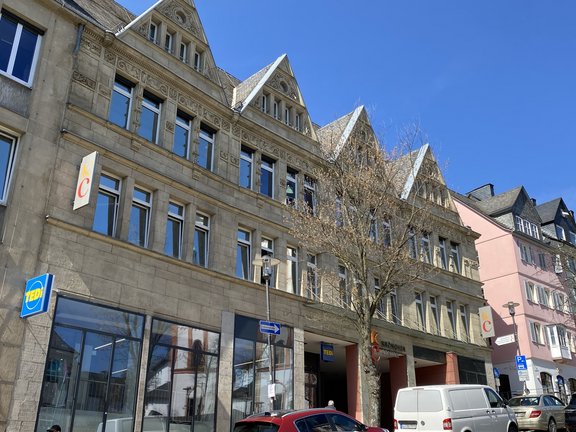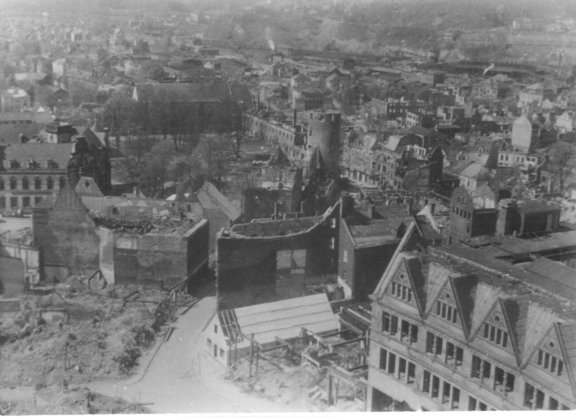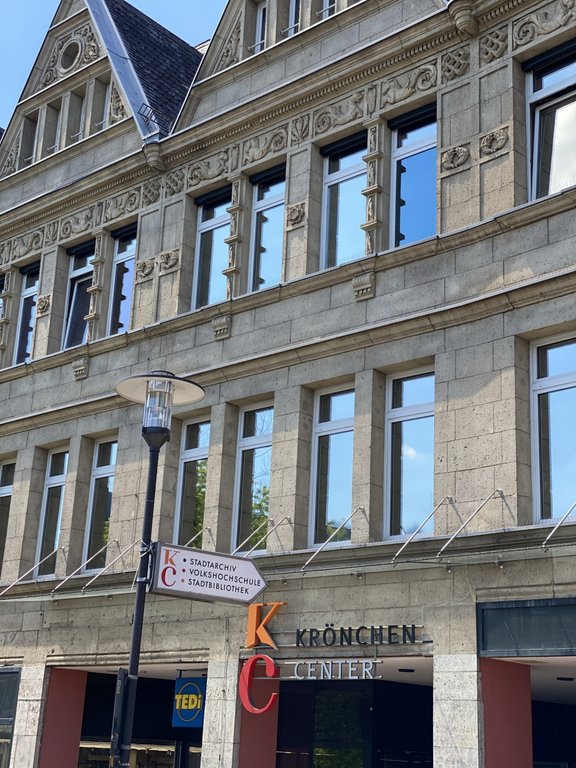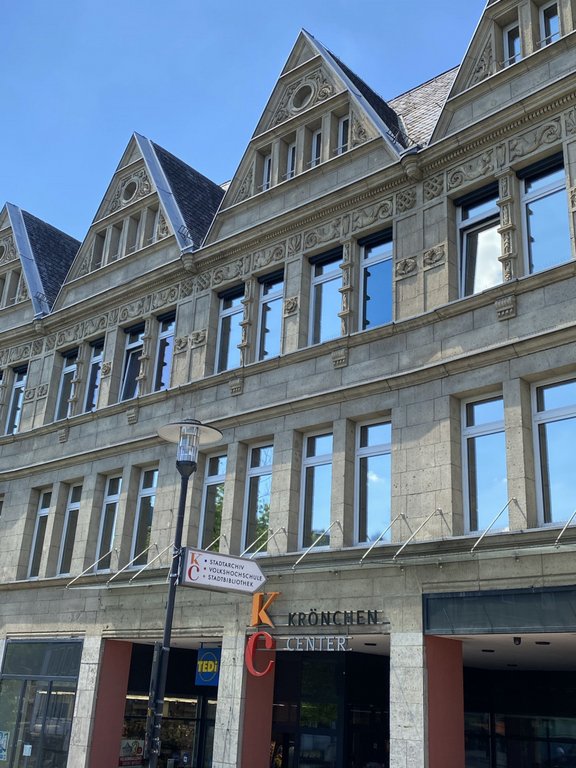magaSIn
KrönchenCenter: The story behind the Siegen structure with the four famed gables
Typifying the Oberstadt, these heritage-protected structures – which only just survived two World Wars – form part of a sandstone facade artfully fashioned in the reform style (between art nouveau and expressionism). What’s more, they have been synonymous with the evolution of department stores for almost 100 years. We are of course referring to the four stone transverse gables of the KrönchenCenter, which stands opposite the city hall on Marktplatz. The gables could tell some exciting tales of Siegen, from the onset of the department store boom late in the 19th century to the decline of the giant store in its traditional format late in the 20th century.
The origins of department store culture in Siegen
When the French trader Aristide Boucicaut opened the world’s first department store in 1852, the emporium quickly became a magnet to the people of Paris – and these ‘cathedrals of commerce’ started their march across Europe. In 1875, Jewish traders Georg Wertheim and Leonhard Tietz established Germany’s first (somewhat modest) department store in Stralsund. The pair rapidly became leading lights in the development of department store shopping in Germany, going on to open Kaufhaus Tietz in Siegen in 1928. Even before this, though, business had been brisk in the Oberstadt: in 1899, Arnold Plaut and Karl Daniel opened the first ‘modern department store’ at no. 19 Haus Markt. According to the city chronicles, the store attracted Siegen residents to the Oberstadt in their droves. They duly sold their premises on to Leonhard Tietz AG in 1927. After the building was demolished, a department store (highly modern for the time) was built in its place. It had huge, metropolitan-style shop windows and the first night-time illuminations seen in Siegen. Even before the store opened its doors on 4 October 1928, countless would-be customers flocked to see the new building and marvel at the range of goods, which was vast by the standards of that day and age.
Confiscation and destruction
A retail area spanning 3,300 square metres and a 27-metre store front with six giant display windows drew thousands of people from Siegen and beyond to Marktplatz. In 1933, however, the business group owned by Leonhard Tietz, a Jew, was seized by the Nazi government. When bombs rained down on Siegen in 1944, only the shell of the building and the facade were left standing. By the end of 1945, the building still lay in ruins – yet a simple new shop spanning some 300 square metres still managed to open early in December. After a lengthy period of development work, the upper floors resumed operations in 1952; behind the stone transverse gables, experts reconstructed the slate roof along the original lines. The department store was back.
‘Cultural department store’ for the city
In spite of repeated investment and modification attempts, the tradition-conscious store was to close its doors again following the merger of Kaufhof AG and Metro AG on 30 September 1999. It seemed that the era of the department store had reached its irrevocable end as the shoppers of Siegen switched their allegiance to the City-Galerie, which had opened in the Unterstadt during the previous year. The KrönchenCenter then stood completely unused until February 2007, when new life was breathed into the historic facade as the concept of a ‘cultural department store’ for the city took shape. A colourful array of facilities was duly installed, including restaurants and retail outlets on the ground floor – thereby reviving the department store tradition. Today, the three floors above accommodate an adult education centre, public library and city archives.
By the way, in a very personal touch, the cultural department store was dubbed ‘KrönchenCenter’ in response to a 2007 survey of Siegen residents.
For more information: https://www.outdooractive.com



